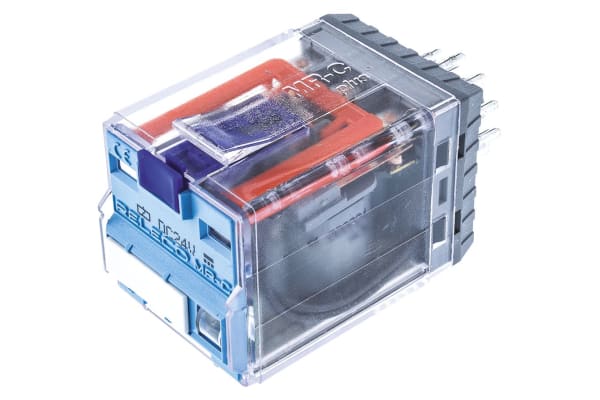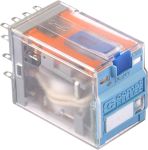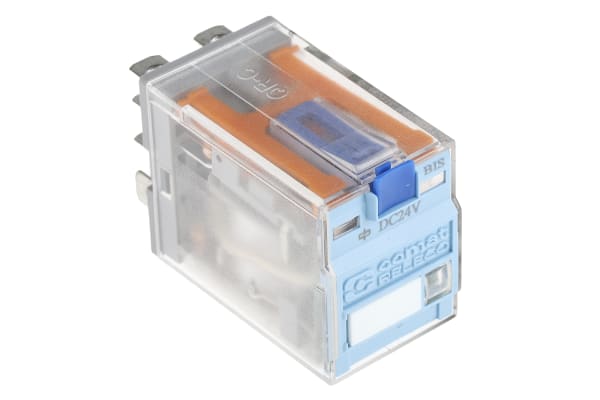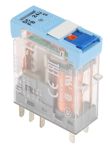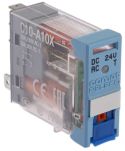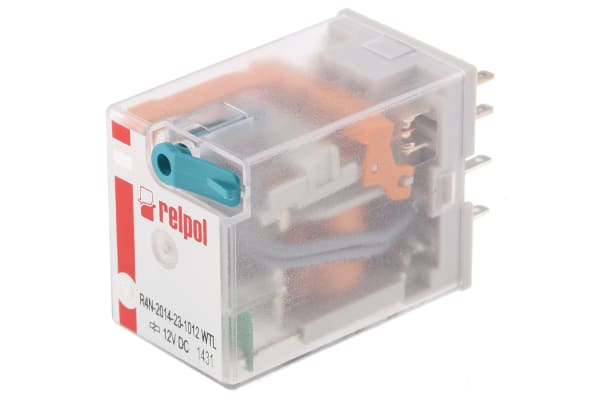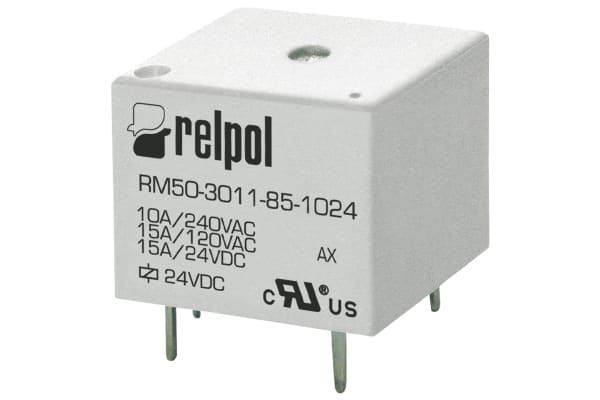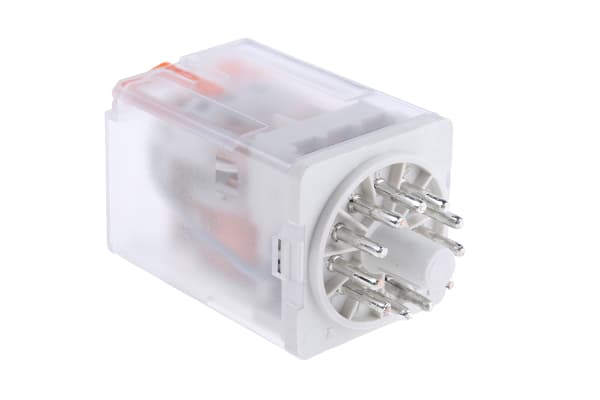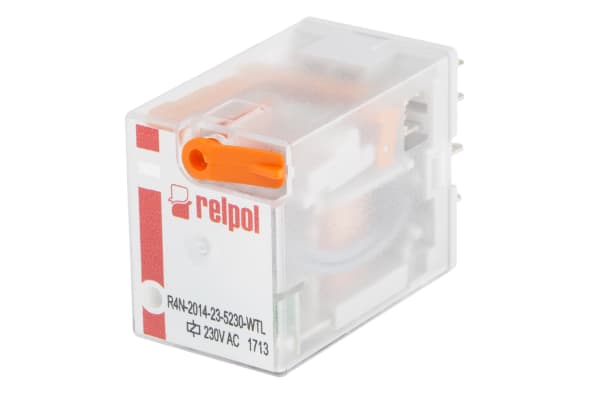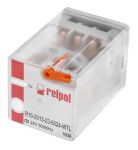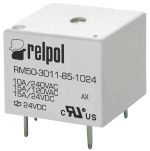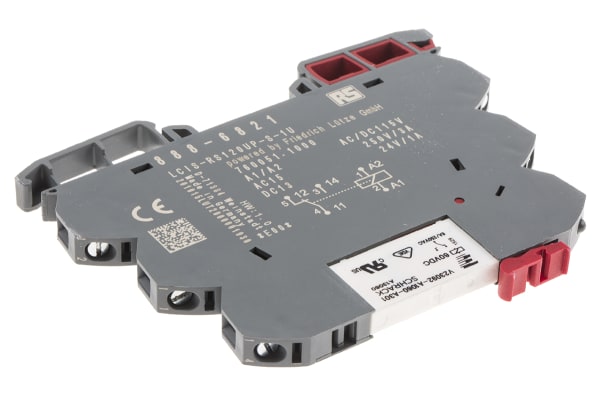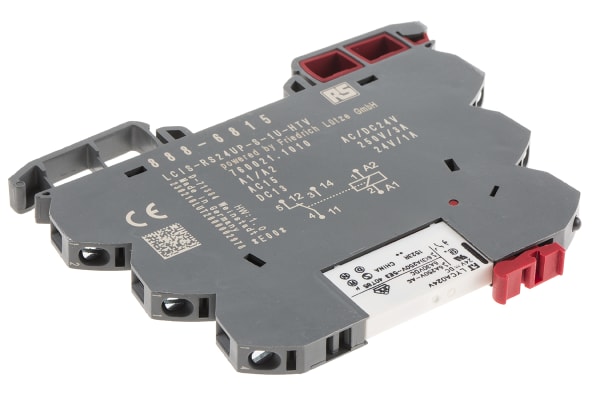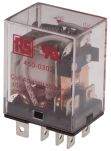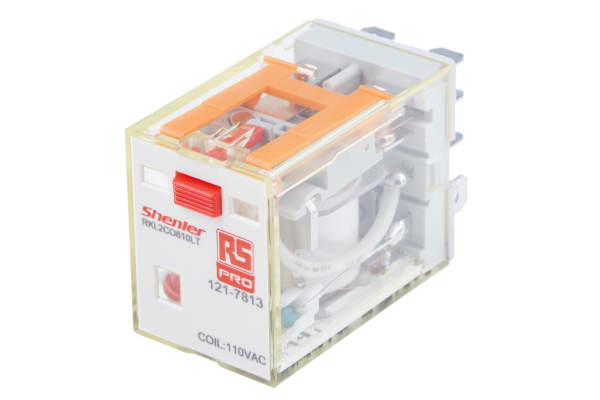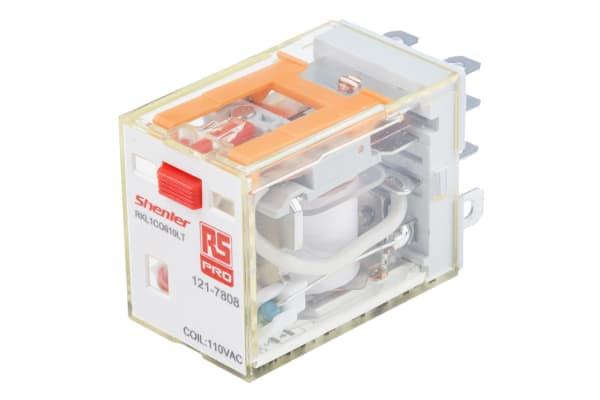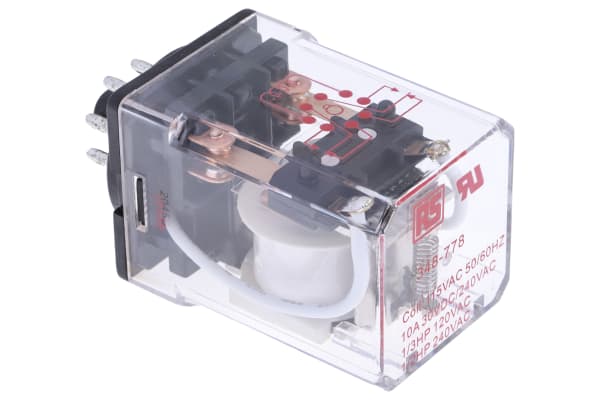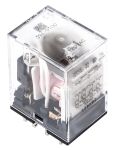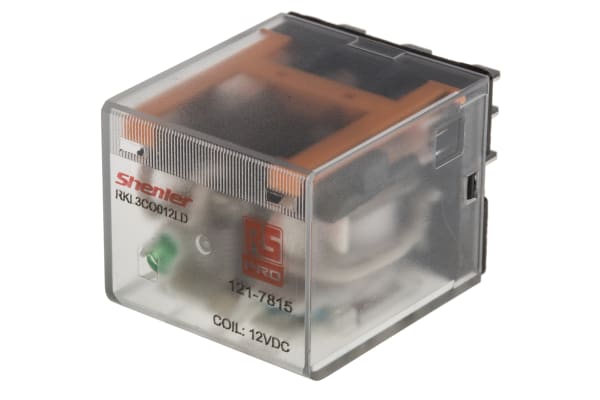Non-Latching Relays
Relays are electrical switches that are operated by electrical impulses with the primary function to open and close a circuit, they can also be referred to as industrial switches. There are 2 main types available, latching and non–latching relays.How do non-latching relays work?Non-latching relays are in a normally closed (NC) position and will stay in this state without power. When power passes through the circuit, the relay switched to a normally open (NO) position by using an internal coil to generate a magnetic force, holding this NO position. Once the current is turned off, it returns to the NC position. This makes non-latching relays well suited to push-button applications like keyboards and micro-controller input buttons.What are non-latching relays used for?Non-latching relays are highly durable and versatile components, making their performance long lasting and suitable for use in a wide range of applications, such as:Automotive enginesHousehold appliancesIndustrial machineryMedical equipmentTelecommunications equipmentWhat is the difference between latching and non-latching relays?Both types of relays in similar in design and function, however, a significant difference between them is that a latching relay will remain in the last position it when it was last powered, whereas a non-latching goes back to its normal position. This makes each more type of relay suitable for different applications. Considerations when selecting a relayWhen choosing a relay, it is important to consider a number of specifications to ensure it is fit for purpose, some factors include:Coil voltage – the required voltage to actuate the switching mechanism. If a voltage is too high this could damage the components, if it is too low then it will not actuate. Contact configuration – This is the state the contacts are in without power. For example SPST, single pole single throw.Contact material – the relay contacts are available in many materials that have certain properties. Common materials are gold, silver, tin oxide and nickel Coil power – the amount of power (watts) the coil operates at. This must match the power in the circuit for correct function. Coil resistance – the amount of resistance (ohms) in the circuit that the coil creates.
-
Releco, 24V ac/dc Coil Non-Latching Relay SPDT, 10A Switching Current Plug In Single Pole, C10-A10BX / AD 24 V
IDR219,849.44 -
Releco, 24V dc Coil Non-Latching Relay 3PDT, 10A Switching Current Plug In, 3 Pole, C3-A30X / DC 24 V
IDR414,315.50 -
Releco, 24V dc Coil Non-Latching Relay 4PDT, 5A Switching Current Plug In, 4 Pole, C9-A41X / DC 24 V
IDR274,602.02 -
Releco, 24V dc Coil Non-Latching Relay DPDT, 10A Switching Current Plug In, 2 Pole, C7-A20X / DC 24 V
IDR307,117.92 -
Releco, 24V dc Coil Non-Latching Relay DPDT, 5A Switching Current PCB Mount, 2 Pole, C12A21X24D
IDR211,668.02 -
Releco, 24V dc Coil Non-Latching Relay SPDT, 10A Switching Current Plug In Single Pole, C10-A10X / DC 24 V
IDR208,101.76 -
Relpol, 12V dc Coil Non-Latching Relay 4PDT, 6A Switching Current Plug In, 4 Pole, R4N-2014-23-1012-WTL
IDR164,991.97 -
Relpol, 12V dc Coil Non-Latching Relay SPDT, 15A Switching Current PCB Mount Single Pole, RM50-3011-85-1012
IDR69,227.40 -
Relpol, 230V ac Coil Non-Latching Relay 3PDT, 10A Switching Current Plug In, 3 Pole, R15-2013-23-5230-WTL
IDR417,042.64 -
Relpol, 230V ac Coil Non-Latching Relay 4PDT, 6A Switching Current Plug In, 4 Pole, R4N-2014-23-5230-WTL
IDR109,400.27 -
Relpol, 24V ac Coil Non-Latching Relay 3PDT, 10A Switching Current Plug In, 3 Pole, R15-2013-23-5024-WTL
IDR417,042.64 -
Relpol, 24V dc Coil Non-Latching Relay 4PDT, 6A Switching Current Plug In, 4 Pole, R4N-2014-23-1024-WTL
IDR136,881.45 -
Relpol, 3V dc Coil Non-Latching Relay SPDT, 15A Switching Current PCB Mount Single Pole, RM50-3011-85-1003
IDR67,024.71 -
RS PRO 115V ac/dc SPDT Interface Relay Module DIN Rail Mount
IDR1,116,554.05Pack (1 Pack of 5) -
RS PRO 24V ac/dc SPDT Interface Relay Module DIN Rail Mount
IDR836,392.86Pack (1 Pack of 5) -
RS PRO 24V ac/dc SPDT Interface Relay Module DIN Rail Mount
IDR1,119,386.08Pack (1 Pack of 5) -
RS PRO, 110V ac Coil Non-Latching Relay DPDT, 10A Switching Current Plug In, 2 Pole
IDR135,308.10 -
RS PRO, 110V ac Coil Non-Latching Relay DPDT, 10A Switching Current Plug In, 2 Pole
IDR97,862.37 -
RS PRO, 110V ac Coil Non-Latching Relay SPDT, 16A Switching Current Plug In Single Pole
IDR96,393.91 -
RS PRO, 115V ac Coil Non-Latching Relay 3PDT, 10A Switching Current Plug In, 3 Pole
IDR65,556.25 -
RS PRO, 115V ac Coil Non-Latching Relay 4PDT, 6A Switching Current Plug In, 4 Pole
IDR133,629.86 -
RS PRO, 115V ac Coil Non-Latching Relay DPDT, 10A Switching Current Plug In, 2 Pole
IDR103,421.54 -
RS PRO, 120V ac Coil Non-Latching Relay 4PDT, 5A Switching Current Plug In, 4 Pole
IDR109,924.72 -
RS PRO, 12V dc Coil Non-Latching Relay 3PDT, 10A Switching Current Plug In, 3 Pole
IDR187,123.76




